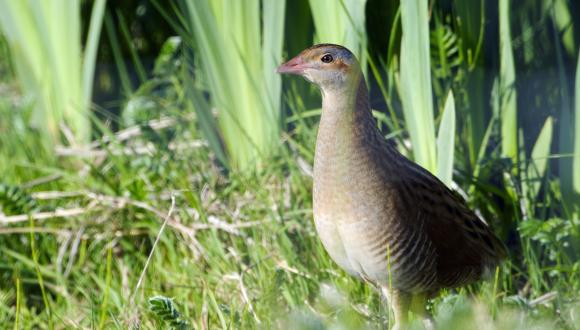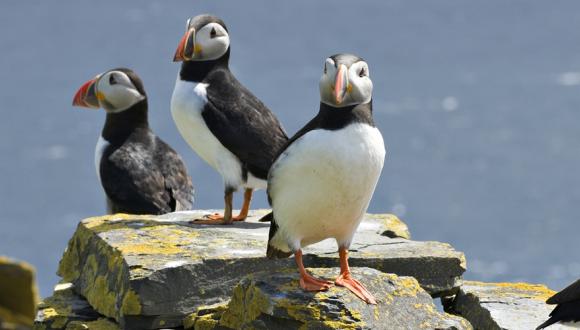Birds: licences to prevent serious damage
NatureScot can grant licences to permit the control of wild birds to prevent serious damage to crops, livestock and fisheries.
The Wildlife and Countryside Act 1981 allows licences to be issued in respect of wild birds for the purpose of: “preventing serious damage to livestock, foodstuffs for livestock, crops, vegetables, fruit, growing timber, fisheries or inland waters”.
Geese
The Act protects all wild geese in Scotland from killing, injuring or taking – except quarry species during the open season. It is also illegal to sell or offer for sale any wild goose, including their carcasses or meat at any time.
Barnacle and white-fronted geese are fully protected at all times. Contact us if these species are causing, or are likely to cause, serious damage to agricultural crops.
Quarry species
Greylag, pink-footed geese and Canada geese can be shot legally between 1 September and 31 January (20 February below the high water mark). During the closed season, these species may only be killed under licence.
Licences can only be granted for specific purposes, usually to prevent serious damage to agricultural interests. We issue licences for shooting a limited number of birds in discrete areas as an aid to other scaring measures. You must be able to show that there’s no satisfactory alternative to shooting.
Resident greylag geese are covered by General Licence 02/2024 – which permits action against resident greylag geese year round.
Canada geese are covered by:
- General Licence 02/2024 – which permits action at any time of year where listed species are causing serious agricultural damage.
- General Licence 03/2024 – which permits action against listed species to preserve public health and safety, and to prevent the spread of disease.
NatureScot can issue licences to shoot other geese species, including pink-footed and barnacle geese, in the closed season.
First-time applicants should apply using the form below. We will seek advice from the local Rural Payments and Inspections Division (RPID) office and we may arrange a site visit if scaring is proving ineffective and serious damage is expected.
Download the Licence application form – to kill geese to prevent serious damage to crops.
Managing geese has become a focus where populations have grown in size. See our managing geese page for further information.
Ravens
NatureScot can grant licences to permit the killing or taking of wild birds to prevent serious damage to livestock.
When you apply, you must provide evidence that serious damage is occurring or is likely to occur. This could be photographic material or records of attacks and/or losses of livestock in previous years. Your application should make clear how many birds you think are causing the problem and the scale of the damage involved.
We must also be satisfied that you’ve tried other scaring techniques and found them insufficient in reducing damage. Licences to shoot ravens are granted only where there’s no other satisfactory solution.
Download the Licence application form – to kill ravens.
Gulls
We can also grant licences to permit the killing of gulls to prevent serious damage to livestock and foodstuffs for livestock.
When you apply you must provide evidence that serious damage is occurring or is likely to occur. You should also give details of all non-lethal scaring and preventative measures that have been tried to address the serious damage. It is important that before applying you have confidently identified the species of gull that is causing problems.
For such applications, especially where it is the first time applying, we may need to seek advice from RPID and SASA and so the application may take longer to process.
See our Gull identification and annual cycle guide.
Fish-eating birds
We can grant licences to permit the killing or taking of wild birds to prevent serious damage to fisheries.
A full application form must be filled in each year detailing the problems experienced, up to date bird count data, and details of the non-lethal scaring regime in place.
We send all applications we receive to Science and Advice for Scottish Agriculture (SASA) and Marine Scotland (if a stocked fishery) for consultation before issuing licences.
Licences to shoot fish-eating birds are granted only where there’s no other satisfactory solution and adequate non-lethal scaring is being carried out.
Download the Licence application form – fish-eating birds
Download the Guidance - fish-eating bird licence applications
Other bird species
Contact us if you wish to apply for a licence for another bird species, to:
- take or kill wild birds, their nests or eggs – including the use of prohibited methods of taking or killing
- kill wild birds in the course of falconry
Licence changes and renewals
You should get in touch if you wish to amend a licence. But check your licence conditions first: you may be able to appoint agents and assistants without having to get them named on your licence.
Find out about adding persons to a licence.
You must also remember to contact us to renew your licence. Licences aren’t renewed automatically.
If you already have a licence number, include it in the subject line of your email, or have it to hand when you call.
Find out more
Contact
If you already have a licence number, include it in the subject line of your email, or have it to hand when you call.





